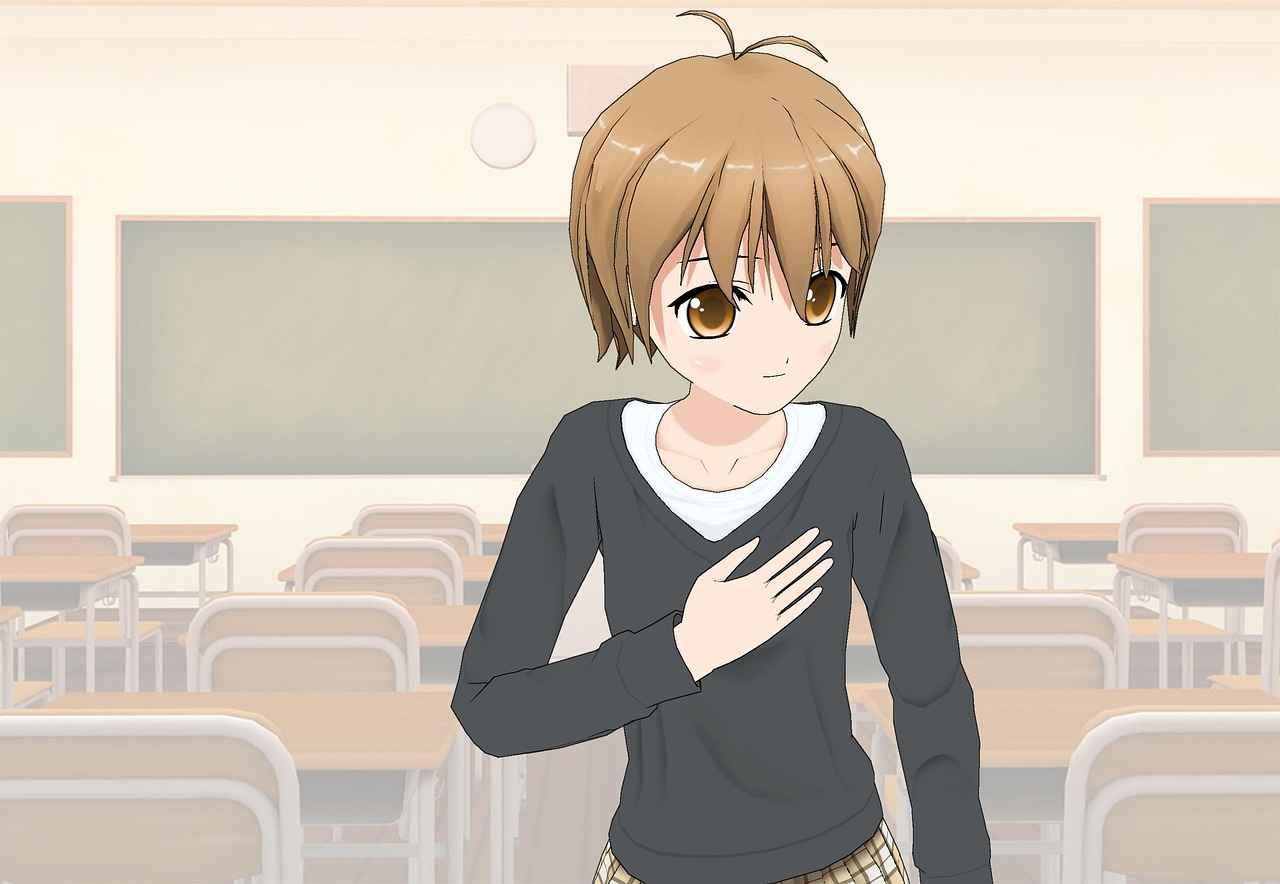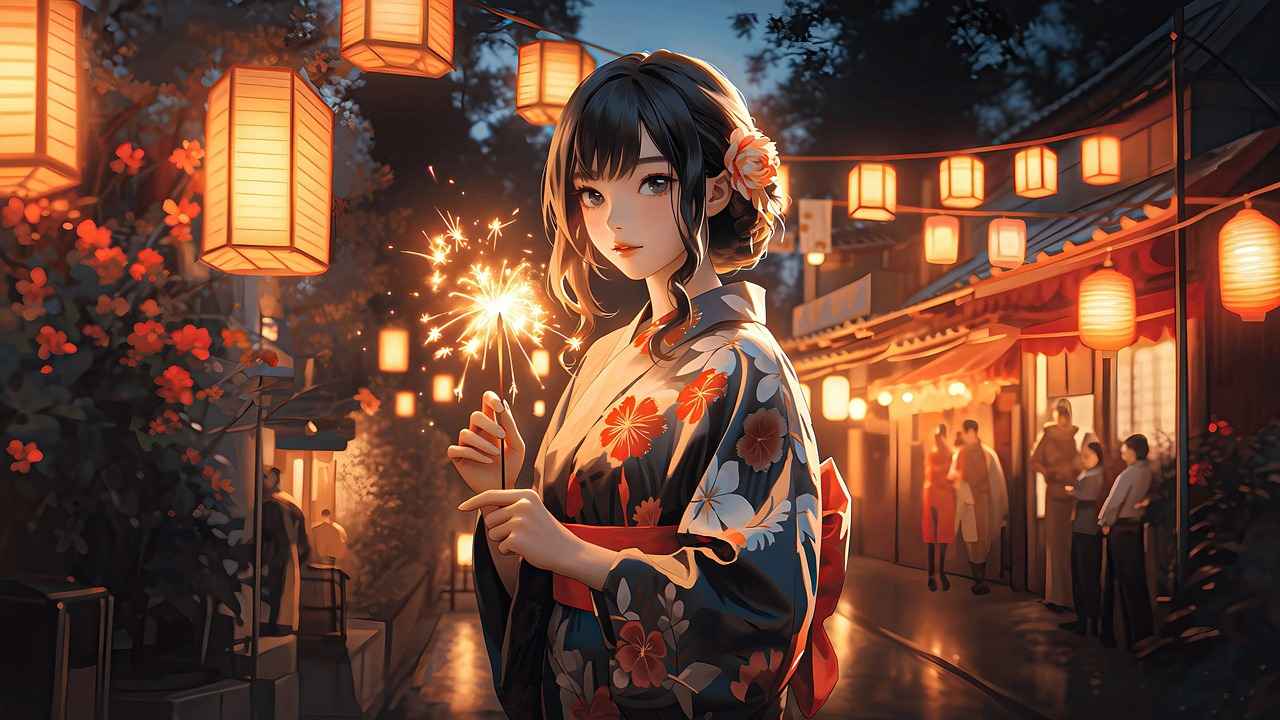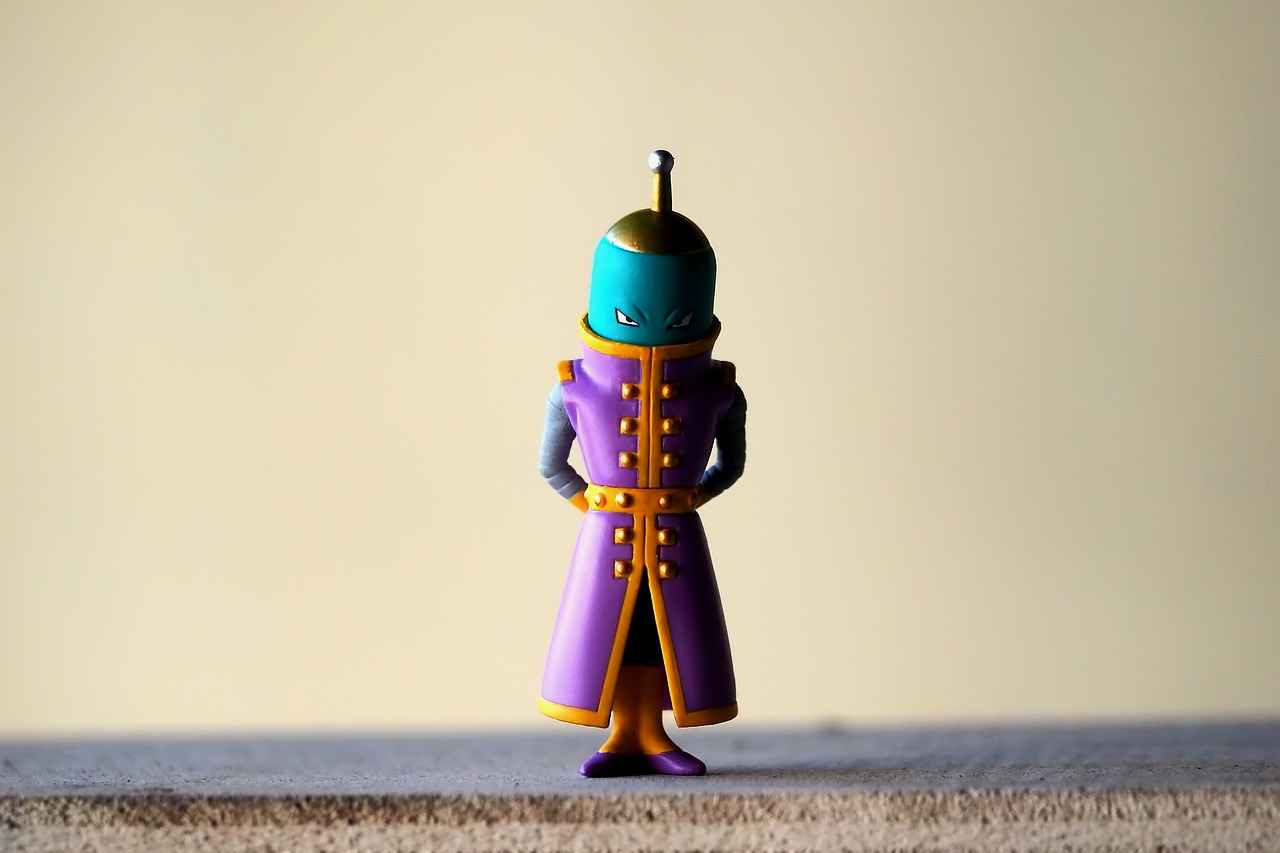This article delves into the fascinating world of anime series that incorporate time skip arcs. These narrative techniques not only enhance storytelling but also significantly contribute to character development and emotional depth. By examining how time skips are utilized, we can appreciate how they elevate the overall viewing experience, making it more engaging and memorable.
What is a Time Skip in Anime?
Time skips are narrative devices that allow a story to leap forward in time, often resulting in substantial transformations in characters and plotlines. They serve various purposes, such as highlighting character growth, introducing new challenges, or shifting the narrative focus. By skipping ahead, viewers can witness the evolution of characters and the world they inhabit, adding layers of complexity to the story.
Top Anime with Memorable Time Skip Arcs
- One Piece: A Journey Through Time
- Naruto: Growth and Legacy
One Piece is renowned for its multiple time skips, each profoundly impacting character development and the dynamics of its expansive world. These skips allow for significant growth among the crew, providing fresh perspectives on their motivations and relationships.
Naruto’s time skip is crucial for transitioning from childhood to adulthood. This leap not only impacts character relationships but also the overarching plot, emphasizing the growth and legacy of its characters.
How Time Skips Affect Storytelling
Time skips can dramatically alter the pacing and tone of a series. They introduce new elements that can enhance emotional engagement, allowing viewers to connect with the characters on a deeper level. By witnessing the long-term consequences of time, audiences experience powerful emotional moments that resonate throughout the series.
Critiques of Time Skip Arcs
While time skips can enrich narratives, they are not without their critiques. Some argue that they can lead to character inconsistencies or a loss of the original charm of the story. It is essential for creators to maintain narrative continuity to keep viewers engaged and invested in the characters’ journeys.
Conclusion: The Art of the Time Skip
In conclusion, time skips can be a powerful narrative tool in anime, providing opportunities for character development and plot progression. When executed effectively, they can elevate a series, leaving a lasting impact on viewers and enhancing the overall narrative experience.

What is a Time Skip in Anime?
Time skips are intriguing narrative devices commonly used in anime, allowing the story to jump forward in time. This technique often results in significant transformations in both characters and plotlines, which can profoundly impact the overall narrative. By skipping over periods of time, creators can explore the evolution of characters, introduce new challenges, and enhance the emotional depth of the story.
The primary purpose of a time skip is to accelerate the narrative, allowing viewers to witness the growth and development of characters without detailing every moment of their journey. For instance, a character who was once inexperienced may return as a seasoned warrior, showcasing their skills and maturity. This leap can also serve to introduce new plot elements, creating fresh dynamics within the storyline.
In many cases, time skips are strategically placed to enhance character arcs. They allow for the exploration of how relationships evolve over time, as well as the impact of past events on present circumstances. Viewers are often left to ponder the changes that have occurred during the skipped time, which can lead to a deeper emotional connection with the characters.
Moreover, time skips can significantly alter the pacing and tone of an anime. By jumping ahead, the narrative can shift from a slower, more detailed exploration of the characters’ lives to a faster-paced, action-oriented storyline. This change can reinvigorate a series, keeping the audience engaged and eager to see how the characters adapt to their new circumstances.
In conclusion, time skips are a powerful storytelling tool in anime, allowing for dynamic character development and plot progression. When executed effectively, they can elevate a series, providing viewers with a richer and more engaging experience.

Top Anime with Memorable Time Skip Arcs
Time skips are a fascinating narrative device in anime, offering a unique way to explore character development and plot progression. Several anime series have effectively utilized these time skips to enrich their narratives, creating memorable arcs that resonate with viewers. Below, we highlight some of the most notable series that have successfully integrated time skips into their storylines.
- One Piece: This iconic series features a significant time skip that transforms the Straw Hat Pirates. After two years of training, the characters emerge stronger and more mature, impacting their relationships and the world around them.
- Naruto: The transition from childhood to adulthood is marked by a pivotal time skip that deepens character arcs and alters dynamics between them. This jump allows for profound growth and a shift in narrative focus.
- Attack on Titan: The series employs time skips to reveal the evolution of its characters and the world plagued by Titans. These jumps not only enhance the storyline but also provide a deeper understanding of the characters’ motivations.
- My Hero Academia: With a time skip that showcases the growth of young heroes, this series highlights the progression of their abilities and the stakes involved in their journey, enriching the overall narrative.
- Fairy Tail: The time skip here serves to advance the plot significantly, allowing characters to evolve and face new challenges, thus keeping the story fresh and engaging.
These series exemplify how time skips can enhance storytelling by allowing characters to grow, relationships to evolve, and plots to develop in unexpected ways. Each show uses this narrative device to create a more compelling viewing experience, inviting audiences to witness the changes that come with time.
Conclusion: Time skips, when executed thoughtfully, can elevate an anime series, providing depth and complexity to the narrative. The shows mentioned above are prime examples of how this technique can be used to engage viewers and enrich storytelling.
One Piece: A Journey Through Time
One Piece is renowned for its intricate storytelling and rich character development, and one of the most compelling aspects of the series is its use of time skips. These narrative devices not only propel the story forward but also allow for significant character evolution and world-building. This section explores the profound impact of time skips in One Piece and how they contribute to the overarching narrative and character arcs.
Throughout the series, One Piece employs multiple time skips that serve as pivotal moments in the journey of the Straw Hat Pirates. The most notable time skip occurs after the Marineford War, where the crew is separated for two years to train and grow stronger. This interval is crucial as it highlights the personal growth of each character, allowing them to develop their skills and refine their motivations.
Character Development is significantly enhanced during these time skips. For instance, Luffy emerges with a deeper understanding of his responsibilities as a captain, while characters like Nami and Zoro showcase remarkable growth in their abilities and confidence. The time skip not only alters their physical appearances but also reshapes their relationships, adding layers to their interactions and dynamics within the crew.
Moreover, the time skips in One Piece contribute to world-building. The two-year gap allows for the introduction of new elements, such as powerful adversaries and evolving political landscapes within the One Piece universe. This expansion keeps the narrative fresh and engaging, as viewers are introduced to new challenges that the characters must face.
In conclusion, the time skips in One Piece are not merely narrative devices but essential components that enrich character arcs and enhance the storytelling experience. By allowing characters to grow and the world to evolve, these time skips create a more immersive and dynamic narrative that captivates audiences.
Effects on Character Development
The time skip in One Piece serves as a pivotal moment that allows characters to undergo significant evolution and maturation. This narrative device not only propels the storyline forward but also offers a fresh perspective on the characters’ motivations, relationships, and personal growth. In this analysis, we will explore the profound transformations that key characters experience after the time skip, highlighting how these changes impact the overall narrative.
- Luffy’s Growth as a Leader: Post-time skip, Monkey D. Luffy emerges as a more capable and strategic leader. His training with Silvers Rayleigh not only enhances his combat abilities but also deepens his understanding of the responsibilities that come with being a captain. Luffy’s evolution reflects his commitment to his crew and his dream, showcasing a more mature approach to leadership.
- Zoro’s Unwavering Resolve: Roronoa Zoro undergoes rigorous training during the time skip, sharpening his swordsmanship and determination. His encounter with Dracule Mihawk solidifies his resolve to become the world’s greatest swordsman. This transformation not only enhances his fighting skills but also deepens his bond with Luffy and the crew, as he becomes more focused on their shared goals.
- Nami’s Tactical Skills: The time skip allows Nami to grow from a talented navigator into a formidable strategist. Her experiences during the skip enable her to develop advanced weather manipulation techniques, which play a crucial role in battles. This growth highlights her importance within the crew and reflects her evolving confidence and leadership abilities.
- Sanji’s Culinary Mastery: Sanji uses the time skip to refine his culinary skills and combat techniques. Training with the Red Leg Zeff not only enhances his fighting style but also deepens his character’s backstory and motivations. Sanji’s growth emphasizes his dedication to protecting his crew while pursuing his culinary dreams.
The transformations seen in these characters post-time skip illustrate how the narrative effectively utilizes this device to enrich character development. Each character’s growth not only serves their individual arcs but also strengthens the overall dynamics of the crew, making their journey more compelling and relatable.
World-Building Enhancements
The time skip in One Piece not only propels the storyline forward but also significantly enriches the world-building aspect of the series. As the narrative leaps ahead, it unveils a plethora of new elements, challenges, and dynamics that reshape the very fabric of the universe.
- Introduction of New Factions: The time skip introduces powerful new factions and characters that were previously unknown. These groups often have their own unique motives and conflicts, adding layers to the existing narrative and creating fresh challenges for the protagonists.
- Evolution of Existing Locations: Many familiar locations undergo significant transformations during the time skip. Cities and islands may experience growth, destruction, or even political upheaval, reflecting the passage of time and its impact on the world.
- Changes in Power Dynamics: The balance of power shifts dramatically after the time skip. New alliances are formed, and former enemies may become allies, leading to unexpected plot twists and character interactions.
- Introduction of Advanced Technologies: The technological advancements that emerge during the time skip play a crucial role in the evolving landscape of One Piece. These innovations can alter combat strategies and influence the overall direction of the story.
Moreover, the time skip serves to deepen the lore of the One Piece universe. As characters grow and evolve, they bring with them new insights and experiences that enrich the backstory. This development invites viewers to explore the history and culture of various factions, enhancing the overall immersion into the world.
In conclusion, the time skip in One Piece is a masterful narrative device that not only propels character development but also significantly enhances world-building. By introducing new elements and shifting dynamics, it keeps the audience engaged and eager to explore the complexities of this ever-expanding universe.
Naruto: Growth and Legacy
Naruto’s time skip, which occurs between the original series and its sequel, Naruto: Shippuden, serves as a crucial turning point in the narrative, marking a significant transition from childhood to adulthood. This time jump not only alters the characters but also reshapes their relationships and the overall plot trajectory.
During this time skip, Naruto Uzumaki and his companions undergo extensive training, which allows them to develop new skills and abilities. This growth is not merely physical; it also reflects their emotional maturation. The struggles and challenges faced during their formative years are now juxtaposed with the responsibilities of adulthood. As a result, viewers witness a more complex and layered portrayal of the characters.
The relationships among characters also evolve dramatically during this period. For instance, Naruto’s bond with his friends, particularly Sakura Haruno and Sasuke Uchiha, deepens as they confront their pasts and work towards their futures. The time skip emphasizes the importance of teamwork and friendship, showcasing how these themes become more pronounced as characters grow older.
Moreover, the time skip introduces new antagonists and challenges that test the characters in unprecedented ways. This shift not only raises the stakes but also enriches the narrative, as the characters must adapt to a changing world filled with new threats. The contrast between their childhood experiences and the challenges of adulthood creates a compelling dynamic that keeps viewers engaged.
In conclusion, Naruto’s time skip is pivotal in shaping the series’ narrative and character development. It enhances the emotional depth of the story, making it resonate more profoundly with audiences. By transitioning from childhood to adulthood, the series not only reflects the characters’ growth but also underscores the themes of friendship, responsibility, and perseverance.

How Time Skips Affect Storytelling
Time skips can dramatically alter the pacing and tone of a series, serving as a powerful narrative device in anime storytelling. They allow for significant character development and plot progression, creating a unique viewing experience that resonates with audiences. This section will analyze the storytelling techniques employed in anime that effectively utilize time skips to enhance emotional engagement.
One of the most impactful aspects of time skips is their ability to evoke deep emotional responses from viewers. By advancing the timeline, audiences witness the consequences of time on characters, relationships, and the world around them. For instance, in series like Naruto, the time skip not only marks a transition from childhood to adulthood but also highlights the growth and struggles that characters endure during this period. This technique allows viewers to engage more profoundly with the characters’ journeys, as they can observe the changes and challenges that come with maturity.
Moreover, maintaining narrative continuity is crucial when implementing time skips. Successful anime series find a balance between the passage of time and coherent storytelling. For example, in One Piece, the time skips are strategically placed to enhance character arcs without losing the essence of the storyline. This careful planning ensures that the audience remains connected to the characters and their development, despite the leap in time.
In conclusion, time skips serve as a vital storytelling mechanism in anime, enriching character development and plot progression. When executed effectively, they not only elevate the narrative but also leave a lasting emotional impact on viewers, making them an essential element in the art of storytelling.
Emotional Impact on Viewers
Time skips in anime are more than just a narrative tool; they serve as a powerful mechanism to evoke deep emotional responses from the audience. By allowing viewers to witness the consequences of time on characters, these skips create moments that resonate profoundly. The emotional weight of seeing beloved characters evolve, face new challenges, or experience loss can leave a lasting impression.
For instance, in series like Naruto, the time skip marks a significant transition from childhood innocence to the complexities of adulthood. Viewers are not only introduced to more mature characters but also witness the impact of their past experiences on their current selves. This evolution fosters a deeper connection between the audience and the characters, as viewers can relate to the struggles and triumphs that come with growing up.
Moreover, the emotional impact is heightened when time skips reveal the results of past decisions. In One Piece, the time skip showcases how the characters have changed in response to their adventures and challenges. The audience feels a mix of nostalgia and anticipation as they see familiar faces transformed by time, leading to a richer viewing experience. This blend of emotions not only enhances character arcs but also reinforces themes of growth, resilience, and change.
Additionally, time skips can introduce new dynamics in relationships, which further complicates the emotional landscape. Characters may reunite after years apart, leading to moments filled with tension, joy, or even regret. These interactions often become pivotal in shaping the narrative and deepening the audience’s investment in the storyline.
In summary, the emotional impact of time skips in anime is significant. By allowing viewers to witness the passage of time and its effects on characters, these narrative techniques create profound moments that resonate long after the credits roll. The ability to reflect on how time alters relationships, motivations, and personal growth is what makes these arcs so compelling and memorable.
Maintaining Narrative Continuity
is crucial in storytelling, especially within the realm of anime that employs time skips. A time skip can introduce significant changes to characters and plotlines, but it is essential that these transitions do not disrupt the overall narrative flow. This section explores how successful anime series achieve this balance, ensuring that viewers remain engaged and invested in the story.
One of the key aspects of maintaining narrative continuity is through character development. When a time skip occurs, it is vital that the evolution of characters feels organic. Series like Naruto and One Piece showcase how characters can grow and change while still retaining their core identities. For instance, the time skip in Naruto allows characters to mature, gaining new skills and perspectives while staying true to their original motivations and relationships. This careful handling of character arcs ensures that audiences can relate to the characters despite the passage of time.
Moreover, world-building plays a significant role in maintaining continuity. As time progresses, the world in which the characters reside should also evolve. In One Piece, the time skip introduces new challenges and dynamics that reflect the characters’ growth. By expanding the universe and integrating new elements, the series keeps the narrative fresh and engaging, allowing viewers to explore the consequences of the time that has passed.
Additionally, effective storytelling techniques, such as flashbacks and foreshadowing, can help bridge the gap created by a time skip. These devices allow the audience to recall important events and relationships from the past, reinforcing the narrative’s continuity. By weaving together past and present, anime can create a cohesive storyline that resonates with viewers.
In conclusion, maintaining narrative continuity during a time skip is a complex but essential task for anime creators. By focusing on character development, world-building, and utilizing effective storytelling techniques, series can successfully navigate the challenges posed by time jumps, ensuring that viewers remain engaged and invested in the unfolding narrative.

Critiques of Time Skip Arcs
While time skips can enhance narratives in anime, they are not without their share of criticisms. This section addresses some of the most common critiques and challenges associated with implementing time skips in anime story arcs.
- Potential for Character Inconsistency: One of the primary concerns with time skips is the possibility of character inconsistency. As characters undergo significant changes during a time skip, some series struggle to maintain their original traits and motivations. This can lead to viewer confusion, as the characters may seem foreign or unrecognizable compared to their earlier selves. A well-executed time skip should ideally show growth while staying true to the essence of the characters.
- Loss of Initial Story Elements: Another critique revolves around the potential loss of the original story elements that made the series appealing in the first place. As the narrative jumps ahead, some of the foundational aspects of the story—such as character dynamics, relationships, and settings—may be overshadowed or diminished. This can detract from the charm and emotional investment that viewers initially felt, leaving them feeling disconnected from the story.
- Impact on Pacing and Tone: Time skips can also disrupt the pacing and tone of a series. When not handled carefully, the transition can feel abrupt, leaving viewers disoriented. This section explores how a poorly executed time skip can lead to a jarring experience, affecting the overall flow of the narrative.
- Dependency on Flashbacks: In some cases, time skips can lead to an over-reliance on flashbacks to explain character development and plot points. While flashbacks can be effective storytelling tools, excessive use may clutter the narrative and detract from the current storyline, making it harder for viewers to stay engaged.
In conclusion, while time skips can serve as powerful narrative tools, they carry inherent risks. It is crucial for creators to navigate these challenges thoughtfully to ensure that the story remains coherent and engaging for the audience.
Potential for Character Inconsistency
In the realm of anime storytelling, time skips serve as a powerful narrative tool, enabling creators to propel their characters forward in time and explore new dimensions of their journeys. However, one prevalent critique of this technique is the that may arise post-skip. This analysis aims to delve into how some series grapple with maintaining the integrity and authenticity of their characters after significant time jumps.
When a series employs a time skip, it often results in noticeable changes in characters’ appearances, abilities, and even their motivations. While these transformations can be refreshing, they sometimes lead to a disconnect between the characters’ past selves and their present iterations. For instance, a character who was once driven by a specific goal may appear to have shifted their priorities without sufficient narrative explanation, leaving viewers questioning their development.
Moreover, certain anime fail to adequately address the emotional and psychological growth that should accompany the passage of time. Characters may return from a time skip with new skills and maturity, but if their core personality traits remain unchanged, it can create a sense of inconsistency. This discrepancy can alienate viewers who have invested in the characters’ journeys and expect logical progression in their development.
Another aspect to consider is how relationships evolve during the time skip. Characters who were once close may find themselves distanced due to the events that transpired during the missing years. If these changes are not explored thoroughly, it can lead to a feeling of unresolved tension or confusion among the audience.
In conclusion, while time skips can enrich the narrative landscape of an anime, they come with the challenge of maintaining character consistency. Series that effectively address this issue often provide viewers with a seamless transition that respects the characters’ histories while allowing for growth and evolution. By doing so, they enhance the overall storytelling experience and keep the audience engaged.
Loss of Initial Story Elements
One of the most significant critiques of time skip arcs in anime is the potential loss of original story elements. As narratives leap forward in time, the essence that initially captivated audiences can sometimes fade away. This phenomenon raises questions about the balance between character growth and the preservation of the series’ original charm.
Initially, viewers are drawn to a series for its unique characters, engaging plots, and emotional depth. However, when a time skip occurs, there is a risk that the core themes and character dynamics that made the story appealing may become diluted. For instance, in some cases, characters may undergo drastic changes that feel inconsistent with their established personalities, leading to a disconnect for long-time fans.
Moreover, time skips often introduce new characters or shift the focus to different plotlines, which can overshadow the original cast. This shift can alienate viewers who were invested in the initial story arc. The transition may feel abrupt, making it challenging for audiences to reconnect with characters they once loved. As a result, the emotional weight that previously resonated may diminish, leaving fans longing for the charm of earlier episodes.
Another aspect to consider is the narrative pacing. Time skips can accelerate the story’s progression, sometimes at the expense of character development. The depth of relationships that was carefully built in earlier episodes may be rushed or overlooked, causing the narrative to lose its richness. This can lead to a less satisfying viewing experience, as the gradual evolution of characters is replaced by sudden changes.
In conclusion, while time skips can serve as effective narrative devices, they must be handled with care. To maintain the original story’s charm, it is essential for creators to strike a balance between character evolution and the preservation of core elements that originally captivated their audience. Failing to do so may result in a series that, while ambitious, loses the very essence that made it beloved.

Conclusion: The Art of the Time Skip
In the realm of anime, time skips serve as a transformative narrative device that can significantly enhance the storytelling experience. These jumps forward in time not only propel the plot but also facilitate profound character development, allowing for a deeper exploration of their motivations, relationships, and growth. When executed with precision, time skips can breathe new life into a series, creating a more immersive and impactful viewing experience.
One of the most compelling aspects of time skips is their ability to showcase the evolution of characters. As viewers, we often become attached to characters during their formative years, and a well-placed time skip allows us to witness the fruits of their struggles and triumphs. This transition can lead to unexpected revelations about their personalities and goals, often enriching the narrative. For instance, characters who once appeared naive may emerge as seasoned veterans, bringing a fresh perspective to their interactions.
Moreover, time skips can significantly alter the emotional landscape of a series. By allowing audiences to see the consequences of time on relationships and events, these arcs can evoke powerful feelings of nostalgia, loss, or hope. The passage of time can serve as a reminder of the stakes involved in a character’s journey, making their challenges feel more poignant and relatable.
However, it is essential for creators to maintain narrative continuity during these skips. A coherent storyline that respects the established world and character dynamics is crucial for retaining viewer engagement. When time skips are implemented thoughtfully, they not only enhance the plot but also solidify the emotional connections audiences have with the characters.
In summary, the art of the time skip in anime is a delicate balance of innovation and tradition. When done right, it can elevate a series from a simple story to a rich tapestry of experiences, leaving a lasting impact on viewers long after the credits roll.
